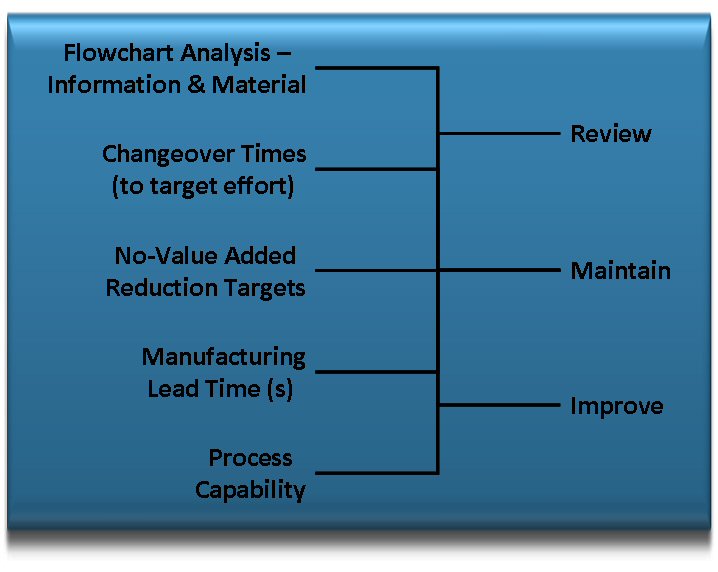5.19 - Cellular Factory Control
Many companies are restructuring into cellular organisations by passing ownership and influence to the teams working within the cells.
To define product units and detail their cellular structures is to state a long term manufacturing strategy for a business. This strategy relates the mix of machines, processes, systems and people to the market and product strategies and the needs of the customers. Documentation and handbooks must be provided for Module / Cell Leaders outlining the strategies and to provide training on start-up.
As a result of changes to the environment, perhaps in the marketplace or in manufacturing technology, the manufacturing strategy needs to be periodically reviewed, maintained and improved as part of a professional operations management approach. The corresponding documentation must also be updated.

Audit
The operations manager should visit each cell at random and audit its state of good order against an agreed checklist. This audit should take place at random intervals and short notice.
Annually
Each product unit must monitor whether its manufacturing strategy is still up-to-date with the marketing strategy and customer needs. The needs of the market must be reassessed and the cells updated to reflect that.
Weekly
The Industrial Engineer associated with each cell must ensure (in collaboration with the development office) that all changes are documented. After formal discussion, signing-off and implementation, the cell’s database should be updated to reflect the new situation.
Continually
Everyone working in the cell should be encouraged and supported in suggesting ways of improving it. It is these ideas that lead to the need for improvement maintenance.
Cellular Factory Control
To succeed in creating new ownership, new practices must become part of the day to day activities with success also depending on the setting of goals against which performance is measured.
Goals need to:-
- Support our business
- Provide customer satisfaction
- Be appropriate to the cell
- Be easy to understand
- Indicate achievement visibly
Customer orders determine the manufacturing programme and commitments have to be made by the cell to a daily / weekly / monthly production plan.
This production plan is formed in joint discussion between responsible partners. These would normally be from original equipment sales, manufacturing and Parts & Service as appropriate. They would establish a common plan that is achievable, meets customer needs and presents levelled schedules to the cells.
To meet our commitments we must meet goals set every week for:-
- Achievement of plan
- Product Quality
- Lead time (of a representative product)
- Stock turn rates
- Sales arrears (where relevant)
‘Achievement of Plan’ records whether we actually made to time the agreed daily / weekly / monthly plan.
‘Product Quality’ highlights defects and deficiencies in our manufacturing processes that must be corrected if we are to achieve zero defects.
‘Lead Time’ is the interval between receiving material into the cell and delivering the product from the cell.
The ‘Stock Turn Rate’ compares the output of the cell with the stock held in it. It measures the effective use of material held in the cell. Low stock simplifies material flow and releases money for investment in other things.
Essential Cell Production Control Functions for the Product Unit
- An MRPI function for single cell level external materials procurement planning.
- An across-cell rough cut preliminary planning function
- An in-cell bottleneck scheduling function, using levelling methods, for runner, repeater and stranger categories.
- A pareto function for grouping varieties of products and components to be made in succeeding time periods.
- A containerised material flow control discipline
- A weekly data management and update function.